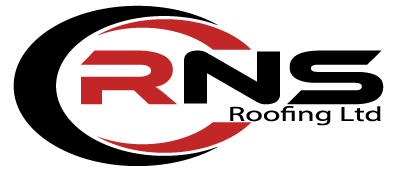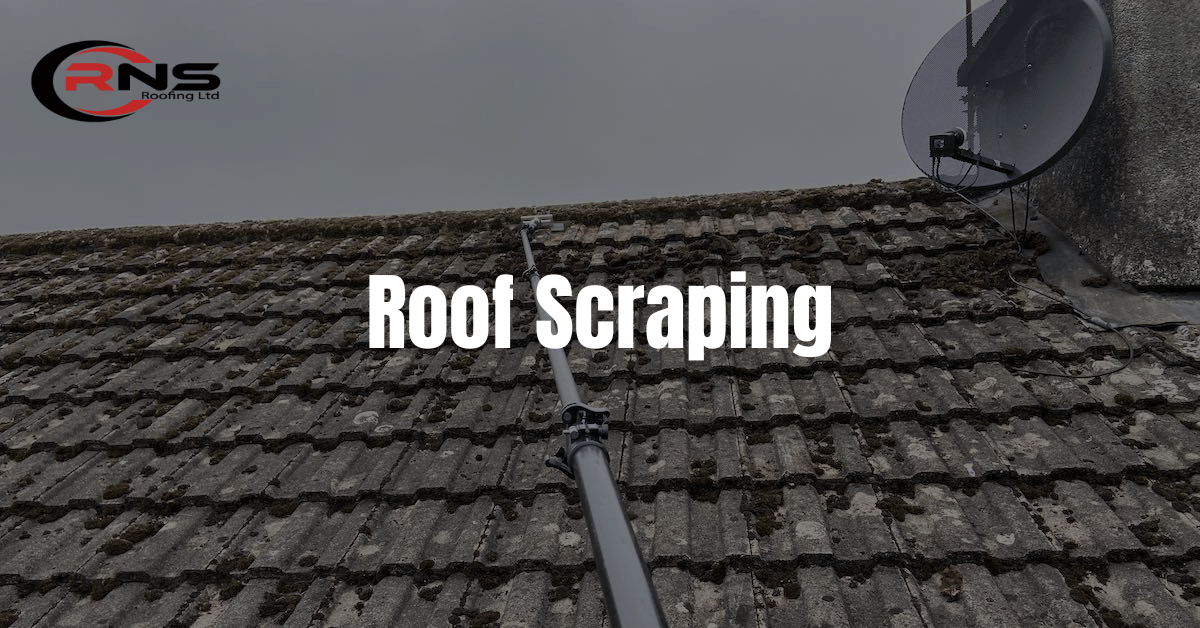As a homeowner, maintaining the integrity of your roof should be a top priority to protect your largest investment. Roof scraping is an important part of any comprehensive roof maintenance plan, yet it is often overlooked or misunderstood. In this guide, I will share what roof scraping is, why it is critical for the longevity of your roof, the proper techniques and tools to use, and a step-by-step process to scrape your roof like a professional. With some basic knowledge and the right approach, roof scraping can be an easy do-it-yourself task to keep your roof in peak condition for years to come.

What is roof Scraping?
Roof scraping is the process of removing built-up grime, debris, and pollutants from your roof surface. It helps maximize your roof’s lifespan and performance.
Why Roof Scraping is Important:
- Improved efficiency: A clean roof surface provides better heat reflection and insulation. This can lower energy costs by up to 20% annually.
- Prevent leaks and damage: Left unattended, built-up grime can lead to water penetration, leaks, and structural damage. Roof scraping removes this buildup and clears drains for proper water runoff.
- Maximize roof lifespan: Roof scraping can extend the life of your roof by up to 15 years by limiting deterioration from environmental pollutants, mould, mildew, and algae growth.
- Improve appearance: A clean, well-maintained roof presents a tidy appearance and helps maintain your home’s curb appeal and property value.
- Safety: Built-up rooftop debris can become a falling hazard, especially if it accumulates around vents, fans, or other protrusions. Roof scraping mitigates this risk and provides a safer rooftop environment.
In summary, roof scraping should be essential to your roof maintenance schedule. When done properly by a professional, it provides short- and long-term benefits for your roofing system and home. For the best results, roof scraping is recommended every 3 to 5 years based on your local climate and roof type. Keeping your roof surface clean and clear is one of the best ways to maximize its performance, efficiency, and lifespan.
The Tools and Equipment You’ll Need for Roof Scraping
To properly prepare for roof scraping, you must gather essential tools and equipment.
You will need:
- Safety gear: work gloves, protective eyewear, steel-toe boots, and weather-appropriate clothing. Roof scraping can be dangerous, so safety must come first.
- A putty knife or wire brush to loosen debris and caked-on residue. A putty knife with a wide, flat blade scraps large, flat areas well. A wire brush can dislodge debris in textured or uneven spots.
- A broom and dustpan to sweep up loosened debris. A push broom and large dustpan designed for construction cleanup will quickly sweep a roof.
- A garden hose or pressure washer to wash the roof. Washing the roof with a hose or pressure washer after scraping will remove any remaining small particles and leave your roof clean and ready for repairs or recoating.
- A ladder or roof jack is used to access the roof. Ensure any ladder is securely placed on level ground and extends at least 3 feet past the roofline. Roof jacks provide a stable platform on which to stand.
- Garbage bags to collect and dispose of debris. Heavy-duty garbage bags will hold up to sharp, rugged roofing materials. Seal bags completely before disposing of them.
With the proper safety equipment and tools, you’ll be ready to get on the roof and thoroughly scrape away years of built-up grime and residue. A clean roof is necessary before applying a new roof coating or making critical repairs. With some time and elbow grease, you’ll have a roof that looks brand new.
Roof Scraping Safety Tips You Must Know
When it comes to roof scraping, safety should always come first. Follow these essential tips to ensure you avoid injury and accidents:
Wear Proper Protective Equipment
Roof scraping can be hazardous, so wearing safety gear is critical. This includes:
- Safety glasses to protect your eyes from dust, debris, and scraping tools
- Hearing protection like earplugs or noise-cancelling headphones to block loud noises
- Steel-toed work boots for traction and to shield your feet
- Work gloves to protect your hands
- Dust masks to prevent inhalation of particles
Use Caution on the Roof
Roof scraping requires working on unstable, sloped surfaces. Exercise maximum caution to avoid slips and falls:
- Only work on roofs with a slope of 4/12 or less. Steeper roofs are too dangerous for amateur roof scraping.
- Place warning signs to alert others you are working on the roof.
- Use roof jacks, planks, or scaffolds for stability. Never overreach or overextend from your stable platform.
- Tie off safety harnesses for high or steep roofs to prevent falls.
- Only scrape in good weather conditions when the roof is dry. Avoid strong winds which can affect your balance and control.
Properly Store and Handle Tools
Roof scraping requires using sharp tools like putty knives, wire brushes, and paint scrapers. Follow these guidelines:
- Keep all tools securely stored in a toolbox when not in use. Unsecured tools can slide down the roof.
- Grasp tools carefully to avoid cuts and lacerations.
- Wear thick work gloves, especially when handling wire brushes.
- Ensure electrical tools like power washers are properly grounded to prevent electric shock.
- Never leave tools scattered on the roof where they can fall or cause tripping hazards.
Following essential safety practices allows roof scraping to be completed successfully without injury. Always put caution and care at the forefront of your work.
If You want Professional Roofing Services in Horsham And Surroundings Call Now: 07469 582272
How to Prepare Your Roof for Scraping
You should take several steps to prepare your roof for scraping to ensure the job is done properly and safely.
Inspect the Roof
First, inspect your entire roof to determine what areas need scraping and patching. Check for any damaged, loose, or missing shingles or tiles needing replacement. Note any areas where water is pooling to indicate dips or depressions in the roof surface. Look for signs of leaks or water damage inside the attic and top-floor rooms below the roof. Address any issues before proceeding with scraping.
Ensure Proper Protection
Protect areas around the base of the roof like gutters, siding, walkways, and landscaping from falling debris using tarps, mesh netting or plywood boards. Cover any air vents, skylights or other openings with mesh or screen to prevent materials from entering. Wear safety gear like work boots, gloves, eye protection, dust masks, and weather-appropriate clothing.
Clean and Remove Debris
Use a leaf blower, air compressor, wire brush, or push broom to remove loose dirt, debris, leaves and other materials from the entire roof surface. Clean out gutters, downspouts, and drains to allow water to flow freely off the roof. Remove or secure any loose materials, decorations, or fixtures on the roof that could fall or blow away during scraping.
Patch and Seal Any Damage
Apply roof cement, sealant, or roof flashing tape to seal and patch any holes, seams, depressions, or damage in the roof surface. Caulk around vents, skylights, and protruding fixtures. Seal or replace damaged shingles and tiles. Patch all leaks to ensure the roof is watertight before applying a protective coating.
\ n\n By thoroughly inspecting your roof, protecting the surrounding areas, removing debris, and sealing any damage, you will have a clean, solid surface ready for scraping and re-coating. Be sure to work carefully and safely, taking all necessary precautions when working on an elevated surface to avoid injury. If any portion of the job seems too difficult or dangerous, it is best to hire a professional roofing contractor to handle it.
Step-by-Step Instructions for Roof Scraping
Roof scraping is a multi-step process that requires patience and precision. To thoroughly clean and prepare your roof, follow these instructions:
Inspect the Roof
Carefully examine your entire roof to determine what areas need scraping and repairs. Look for damaged or loose shingles, rust spots, and areas where the protective sealant has worn away. Note any issues that need to be addressed before starting the scraping process.
Gather the Necessary Supplies
You will need a putty knife, wire brush, scrub brush, roof cement or sealant, gloves, safety glasses, and a drop cloth or tarp. For high or steep roofs, use a roof harness for safety.
Remove Debris
Use a leaf blower, broom, or air compressor to remove leaves, dirt, and other loose debris from the roof surface. This allows you to inspect the roof properly and prevents foreign matter from getting stuck under the new sealant.
Scrape Away the Old Sealant
Use a putty knife and wire brush to scrape off any remaining old roof cement or sealant. Scrub away any stubborn or stuck-on areas with a scrub brush. Vacuum up debris as you go to avoid clogs. Be gentle around vents, seams, or protrusions to avoid damage.
Apply New Sealant
Apply a thick layer of roof cement or sealant with a putty knife over any bare, exposed roof areas including seams, joints, vents, and protrusions. Spread the sealant at least 2 to 3 inches on either side of the area needing coverage. Allow to dry as directed before exposing to weather.
Final Inspection
Do a final walk-around of the roof to ensure all necessary scraping and sealing have been completed and no additional issues must be addressed before the next rainfall. Your roof should now be protected and watertight.
Conclusion
After reading this guide, you will have all the information you need to start roof scraping. While it can seem daunting, with the right tools, safety equipment, and preparation, you can freshen up your roof and give your home exterior a new look. Take your time to evaluate if DIY roof scraping is right for your needs and abilities or if hiring a professional is a better option.
If you do it yourself, start by scraping a test area to build your confidence and skills. With patience and persistence, you’ll be well on your way to enjoying the satisfaction of a job well done and a roof ready for its next coat of protection. When you stand back and admire your transformed roof, the effort will be worth it. You’ve got this! Now, get out there and start scraping.
People Also Ask
Step-by-Step Instructions for Roof Scraping
If done carefully with the right tools, scraping shouldn’t harm your roof. However, avoiding metal tools that can scratch the shingles is crucial. Opt for plastic or rubber-edged scrapers.
pen_spark
Can I scrape my roof myself?
It depends. Scraping a low-pitched roof might be manageable, but steeper roofs require safety precautions like fall arrest equipment. If you’re unsure about your comfort level or roof pitch, consider hiring a professional.
pen_spark
What happens to the debris after scraping?
Once you’ve scraped the moss or debris, carefully bag it and dispose of it properly. Don’t let it clog your gutters!
Is roof scraping always necessary?
Not always! Roof scraping is ideal for removing heavy moss buildup that can trap moisture and damage your roof. A simple cleaning might suffice if your roof has some light dirt or debris.

